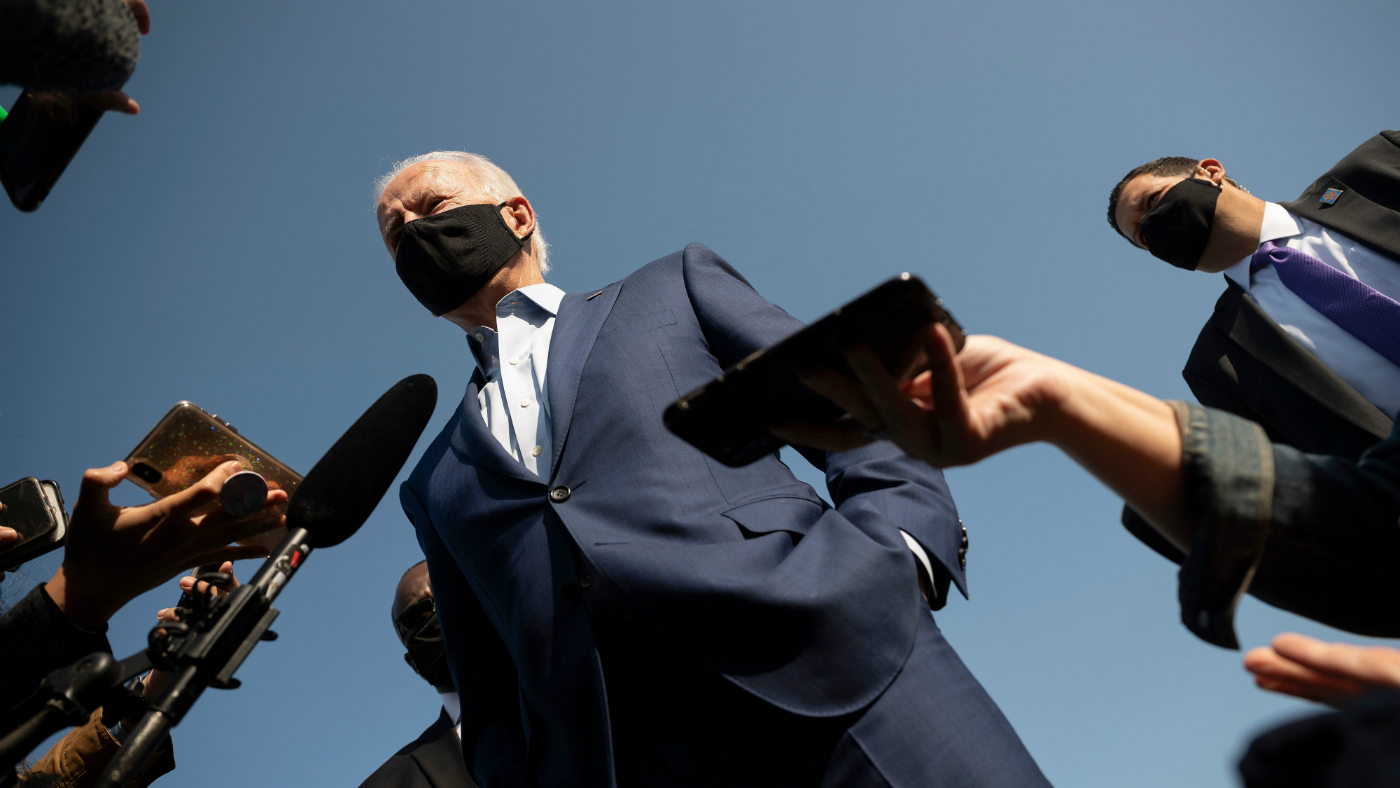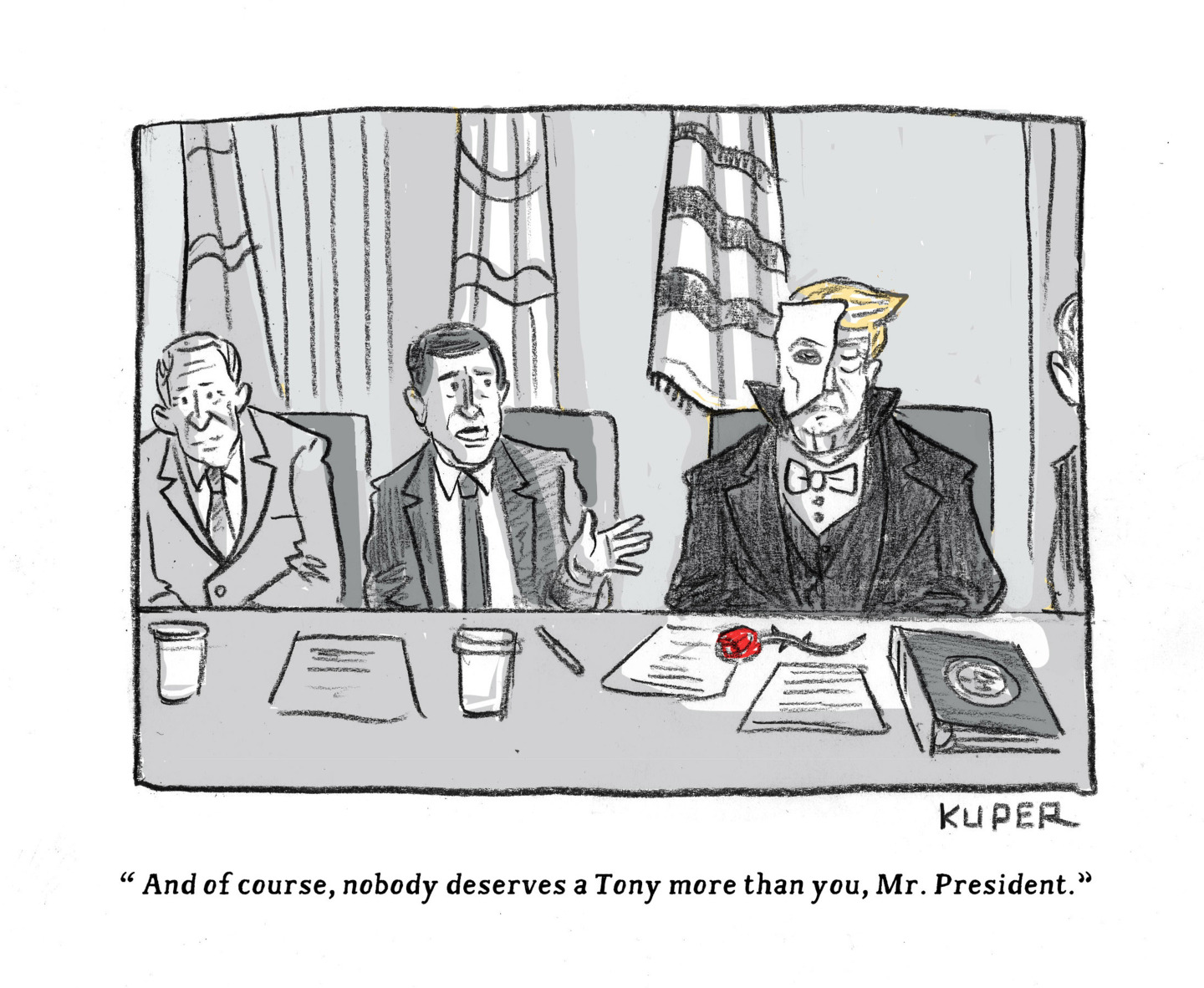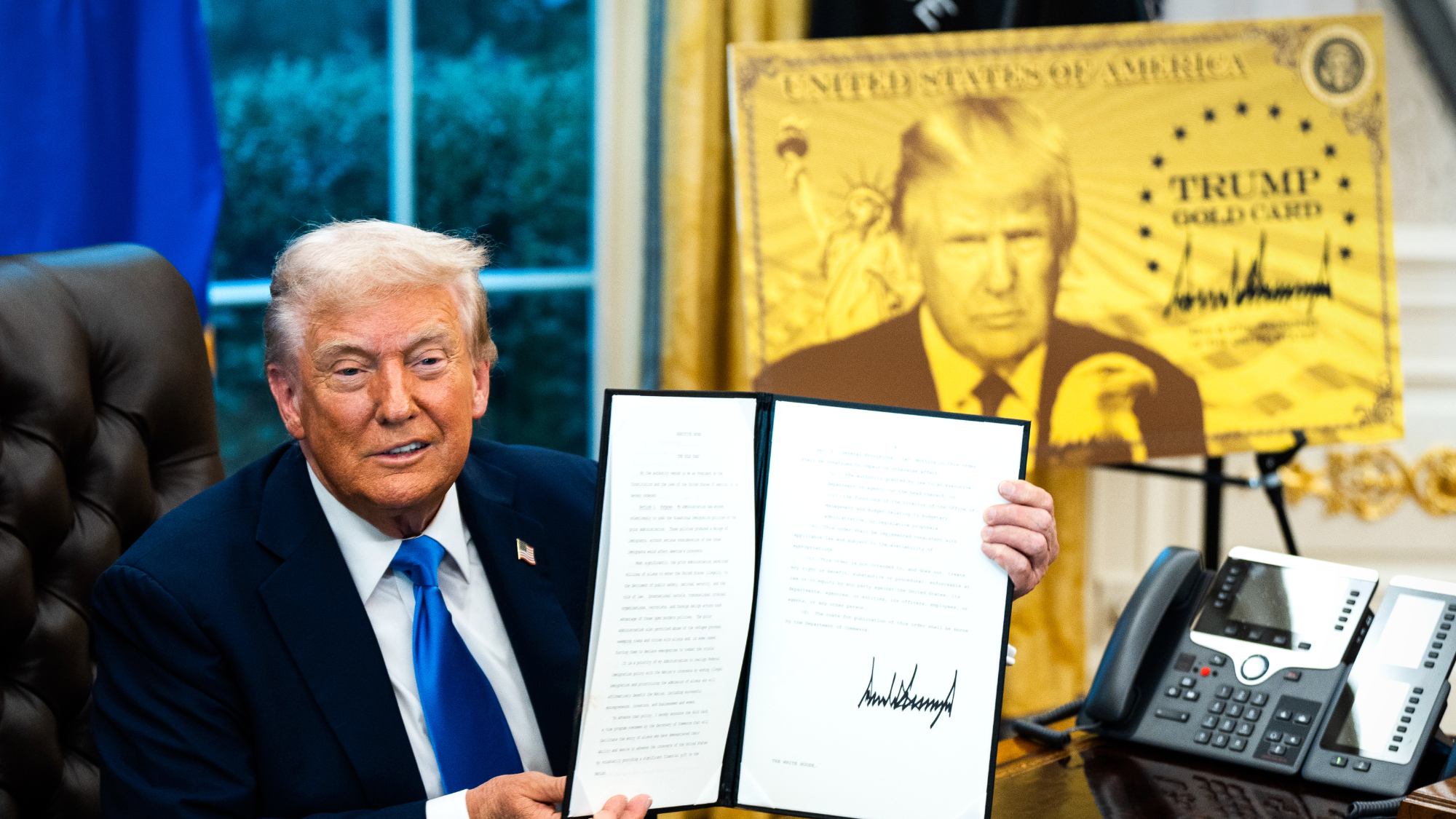US election: could the polls be wrong and what happens if they are?
Biden leads Trump by a large margin across the country - but the spectre of 2016 looms large

With the US election just weeks away, Donald Trump appears to have a mountain to climb having trailed Joe Biden in nationwide polls for months.
But as many Hillary Clinton supporters learned in 2016, opinion polling is not always the best predictor of the election outcome.
Biden’s polling lead is considerably larger than Clinton’s ever was, however, a lingering sense of doubt accompanies every new survey claiming that the former vice president is on course for a landslide victory. So what happens if the polls are wrong?
The Week
Escape your echo chamber. Get the facts behind the news, plus analysis from multiple perspectives.

Sign up for The Week's Free Newsletters
From our morning news briefing to a weekly Good News Newsletter, get the best of The Week delivered directly to your inbox.
From our morning news briefing to a weekly Good News Newsletter, get the best of The Week delivered directly to your inbox.
What went wrong in 2016?
Contrary to the assessments of those who “swore off polls for ever” in the wake of the 2016 election, the polls were not necessarily wrong but misunderstood, The Times says.
US presidential elections are two-stage, state-by-state contests finalised through the Electoral College and do not directly represent the popular vote.
In almost all states, the candidate who has the highest vote total takes all the delegates for that state, and the candidate who seals a majority (270 or more) of the Electoral College wins the election.
A free daily email with the biggest news stories of the day – and the best features from TheWeek.com
As a result, it is possible for a candidate to win a plurality of votes but still lose the election, making opinion polling a less accurate predictor in tight races.
This is exactly what happened in 2016.
Pollster RealClearPolitics showed Clinton averaged a 3.2 percentage point lead over Trump across the US on the day of the election. She ended up winning the popular vote by 2.1 percentage points, “a 1.1 point difference that is within the margin of error for most polls”, Business Insider says.
But through a targeted campaign strategy, Trump took advantage of the Electoral College in a highly efficient way, converting just 46% of the popular vote into 56.5% of the Electoral College and taking the White House.
How does Biden’s lead compare?
Biden’s polling lead over Trump is significantly wider than Clinton’s ever was. Ahead of the first presidential debate on Tuesday, the ex-vice president held a seven-point advantage over Trump, increasing to eight after the showdown.
This is the largest polling lead at this point in an election cycle since former president Bill Clinton’s re-election in 1996, Newsweek reports.
And “even assuming that current national and state polls were as far off from the final result as they were in 2016”, Biden would “still win the Electoral College and five of the top six states analysts say are likely to decide the election”, Business Insider adds.
Can the polls be trusted?
This all depends on how we view them.
At a national level, polls show the number of people likely to vote for a candidate without taking into account the Electoral College. So any definitive predictions made using their figures run the risk of being incorrect.
It was an unusual year in 2016, in that a large number of voters remained undecided right up until polling day. This made predicting the outcome of the vote harder, the Pew Research Centre says.
That is not the case in 2020, where there is a smaller number of undecided voters than in most election years.
One thing worth taking into account, however, is the small number of major discrepancies in polling at state level in 2016. One example is Wisconsin, which Trump won by a margin of 0.7%, but which polls had Clinton leading by 6.5 points on average.
What happens if polls are wrong?
In 2016, incorrect polling predictions were surprising. In 2020, a similar outcome would be seismic.
“Only once in more than 80 years of polling” has a lead of the size that Biden now enjoys been overturned by election day, The Article reports. This was in 1948, when President Truman came from behind to defeat Thomas Dewey.
“So can we be certain that Trump will lose?” The Article asks. “No: but if he wins he will have achieved something that no candidate has managed for 72 years.”
-
 5 prize-winning cartoons about Donald Trump's appetite for awards
5 prize-winning cartoons about Donald Trump's appetite for awardsCartoons Artists take on operatic ambitions, peace prize pacifiers, and more
-
 Will Trump’s $12 billion bailout solve the farm crisis?
Will Trump’s $12 billion bailout solve the farm crisis?Today’s Big Question Agriculture sector says it wants trade, not aid
-
 ‘City leaders must recognize its residents as part of its lifeblood’
‘City leaders must recognize its residents as part of its lifeblood’Instant Opinion Opinion, comment and editorials of the day
-
 ‘City leaders must recognize its residents as part of its lifeblood’
‘City leaders must recognize its residents as part of its lifeblood’Instant Opinion Opinion, comment and editorials of the day
-
 Homeland Security Secretary Kristi Noem might not be long for Trumpland
Homeland Security Secretary Kristi Noem might not be long for TrumplandIN THE SPOTLIGHT She has been one of the most visible and vocal architects of Trump’s anti-immigration efforts, even as her own star risks fading
-
 Indiana Senate rejects Trump’s gerrymander push
Indiana Senate rejects Trump’s gerrymander pushSpeed Read The proposed gerrymander would have likely flipped the state’s two Democratic-held US House seats
-
 Will there be peace before Christmas in Ukraine?
Will there be peace before Christmas in Ukraine?Today's Big Question Discussions over the weekend could see a unified set of proposals from EU, UK and US to present to Moscow
-
 ‘The menu’s other highlights smack of the surreal’
‘The menu’s other highlights smack of the surreal’Instant Opinion Opinion, comment and editorials of the day
-
 $1M ‘Trump Gold Card’ goes live amid travel rule furor
$1M ‘Trump Gold Card’ goes live amid travel rule furorSpeed Read The new gold card visa offers an expedited path to citizenship in exchange for $1 million
-
 US seizes oil tanker off Venezuela
US seizes oil tanker off VenezuelaSpeed Read The seizure was a significant escalation in the pressure campaign against Venezuelan President Nicolás Maduro
-
 The Trump administration says it deports dangerous criminals. ICE data tells a different story.
The Trump administration says it deports dangerous criminals. ICE data tells a different story.IN THE SPOTLIGHT Arrest data points to an inconvenient truth for the White House’s ongoing deportation agenda